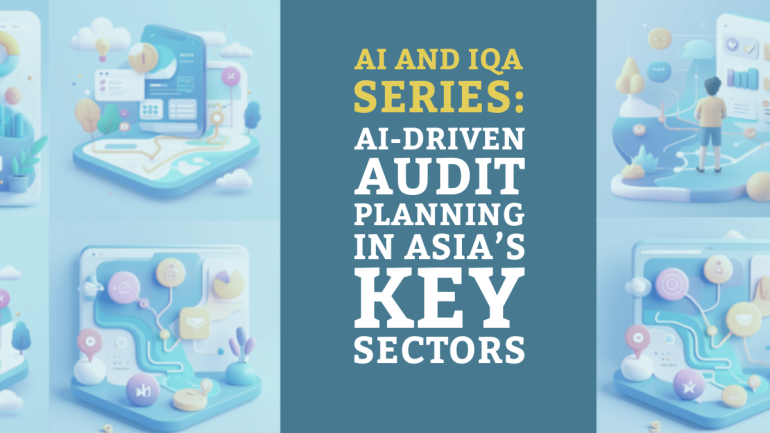Table of Contents
TL;DR: Managing Change and Innovation in Business Organizations
- Adaptability is Key: Organizations must continuously adapt to evolving markets and technologies to thrive.
- Strategic Planning and Communication: Effective change requires a clear vision, meticulous planning, and transparent communication.
- Cultural Shift Towards Innovation: Cultivating an innovative culture involves encouraging risk-taking, creativity, and leadership support.
- Measuring and Balancing: Success in change and innovation is measured by improved performance, while maintaining a balance between innovation and day-to-day operations.
Introduction
Adaptability in Business is the cornerstone of thriving in today’s global economy. This article explores the multifaceted approach required to manage change and foster innovation, ensuring businesses not only survive but flourish in the modern marketplace. With technological advancements, shifting market dynamics, and evolving consumer expectations demanding that businesses not just respond but anticipate and lead through innovation and change, the journey through adaptability in business is as challenging as it is crucial.
Understanding the Need for Change and Innovation
The imperative for change can arise from various quarters—technological breakthroughs like artificial intelligence and blockchain, competitive pressures from global entrants, shifts in consumer behavior driven by social media, and even regulatory changes. Internally, the quest for greater efficiency, improved products and services, and enhanced employee engagement can catalyze change. For instance, the banking industry’s shift towards digital-first services exemplifies how external and internal pressures necessitate innovation for survival and growth.
Strategies for Effective Change Management
- The cornerstone of successful change management is a well-crafted plan, which begins with a clear articulation of the change’s purpose and objectives. This roadmap must encompass not only strategic goals but also detailed action steps, resource allocation, and timelines.
- Communication is the lifeblood of the change process. It must be ongoing, multi-directional, and inclusive, allowing for feedback and adjustments. Transparent communication helps demystify change, alleviate anxieties, and foster a collective commitment to the new direction.
- Implementation is where theory meets practice. It should be approached with flexibility, allowing for course corrections as needed. Engaging change agents within the organization can facilitate smoother transitions, as they serve as champions for the new initiatives.
- Overcoming resistance is perhaps the most daunting aspect of change management. Resistance often stems from fear of the unknown or perceived threats to status and competence. Addressing these concerns directly, providing adequate training and support, and celebrating early successes can convert skeptics into supporters.

Fostering a Culture of Innovation
A culture that champions innovation is marked by openness, collaboration, and a willingness to experiment—and fail. Leaders play a pivotal role by modeling these behaviors, encouraging divergent thinking, and allocating resources to innovation initiatives. Such an environment enables employees to propose and test new ideas without fear of reprisal.
Examples of innovative cultures abound in companies like Tesla, which disrupted the automotive industry by making electric vehicles mainstream, and Spotify, which revolutionized how we consume music. These companies exemplify how a relentless focus on innovation can create new market opportunities and redefine industries.
Challenges in Managing Change and Innovation
Despite well-laid plans, organizations may face unexpected hurdles. These can range from deeper-than-anticipated resistance, to shifts in the external market that render the original goals obsolete. Maintaining agility, fostering open lines of communication, and building a resilient culture can help navigate these challenges.
Moreover, balancing the need for innovation with the requirements of daily operations is a delicate endeavor. It requires a clear strategic vision, prioritization of initiatives, and efficient resource management to ensure that the pursuit of the new does not derail the ongoing.
Conclusion
In the ever-evolving business landscape, managing change and fostering innovation are not just strategies for growth but imperatives for survival. The journey is complex and challenging, filled with uncertainties and opportunities alike. However, by embracing a holistic approach to change management and cultivating an environment that encourages innovation, businesses can position themselves for success in a future that promises to be anything but predictable.
Organizations that navigate these waters successfully will not only achieve immediate goals but also build the resilience and agility needed to face future challenges, ensuring their place at the forefront of their industries for years to come.
FAQs
- How do you identify when your organization needs change?
Organizations may need change when they experience signs such as declining performance metrics, increasing employee turnover, customer satisfaction issues, or when they’re facing significant shifts in the market or technology. Proactive leadership also anticipates future trends and initiates change to stay ahead.
- What are the key components of a successful change management plan?
A successful change management plan includes clear objectives, stakeholder engagement, effective communication strategies, a roadmap for implementation, mechanisms for feedback and adjustments, and strategies for managing resistance. Each component plays a crucial role in ensuring the smooth adoption of change.
- How can leaders foster a culture of innovation?
Leaders can foster a culture of innovation by encouraging risk-taking, rewarding creativity, facilitating collaboration, providing resources for innovation initiatives, and leading by example. Creating an environment where employees feel safe to express innovative ideas is essential.
- What are common pitfalls in managing change and how can they be avoided?
Common pitfalls include underestimating resistance to change, poor communication, lack of stakeholder engagement, and failing to align the change with the organization’s culture. These can be avoided by thorough planning, active listening, and ensuring that change initiatives are aligned with the organization’s values and strategic goals.
- How do you measure the success of change and innovation initiatives?
Success can be measured through a variety of metrics, including performance improvements, employee engagement levels, customer feedback, and the achievement of specified goals related to the change or innovation initiative. Regular reviews and adjustments based on these metrics are crucial for long-term success.




